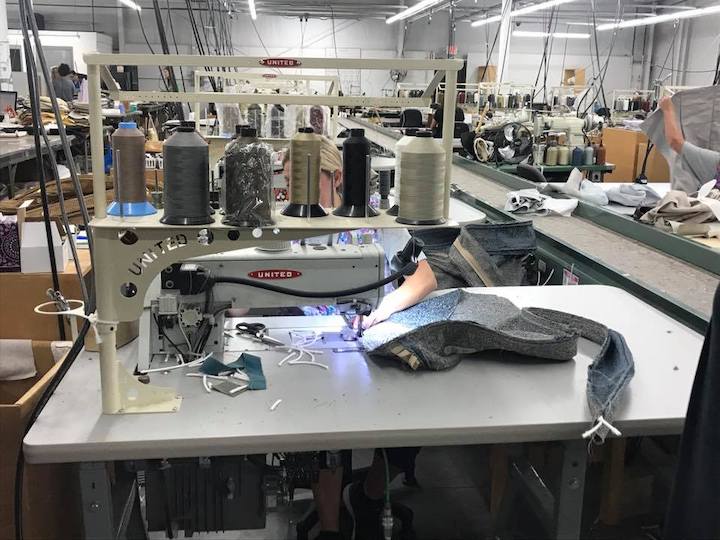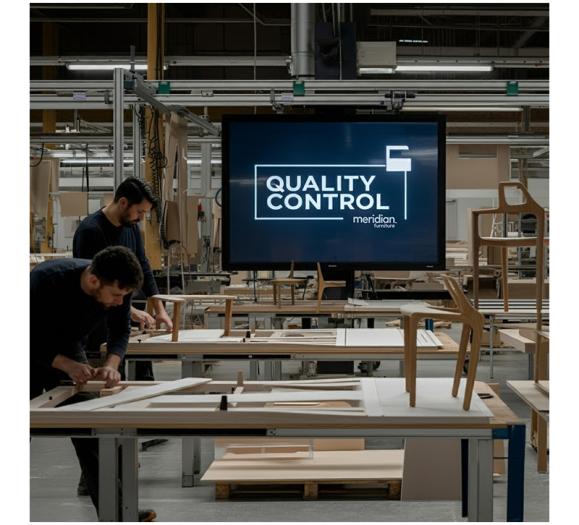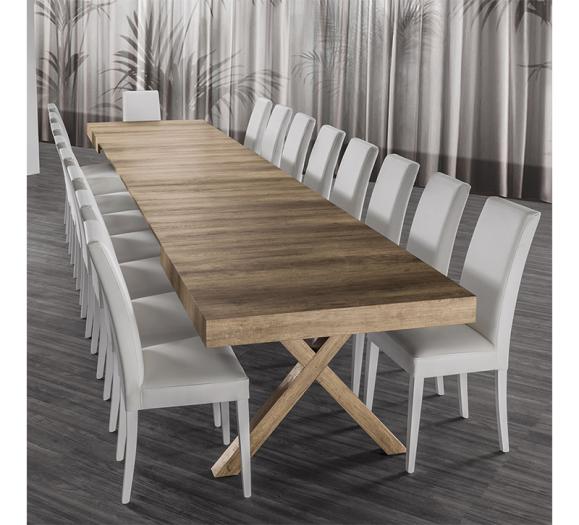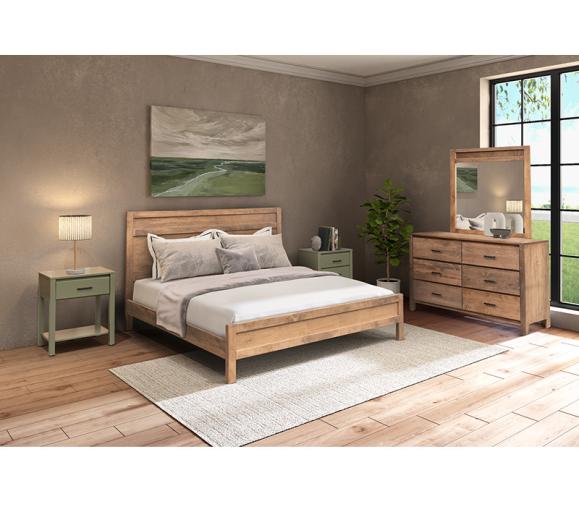This summer, the Furniture, Lighting & Decor team had the opportunity to tour one of Fairfield Chair’s factories in Lenoir, NC. From the fabric cutting to the finishing and upholstery, the dedication to craftsmanship and a quality product was evident at every step of the process. Read on for some highlights and scenes from our fascinating visit.
Our tour started on the fabric side of production, where Fairfield Chair receives, inspects and handles the 150-175 rolls of fabric that are delivered to the facility each day. The company offers 10,000 fabrics under its FOM umbrella, which Fairfield buys and offers to customers. A successful and growing fabric sector for the company is its COM, or “Customer’s Own Material,” segment, where customers can send in any fabric they’d like for a customized final product.
Next we got a glimpse of the fabric cutting process, where employees use CAD software to produce templates to cut the fabric around for each individual piece of furniture. The cutting is done both by hand and by machine—and the machine’s knife blades are changed once a day to ensure a clean cut.

Next we got to watch the expert sewers at work. We learned that the average amount of time it takes to train in a new sewer at Fairfield is about a year, since the company offers so many styles and has its own tried-and-true methods.
Finishing was the next stop, where we watched the wooden frames get their final coats and touches. While about 60 percent of the company’s frames are imported, all of the assembly, sanding and finishing is done at the North Carolina factory. A conveyor belt with 162 hooks carries each frame through the finishing process, which takes almost two hours in total. About every 52 minutes, a piece of furniture comes off the belt. Fairfield offers more than 40 finish options.
Next up was upholstery, where the pieces of furniture started to take shape as the frames, fabric and detailing came together. Fairfield’s target for each piece of furniture is to spend two days in cutting, one day for sewing, two days for finishing, and five days for upholstery for a total of 10 days in production. With all of the detail-oriented work involved in upholstery, it was no surprise that it takes the longest.
Last came the final stop: shipping! Finished pieces are carefully wrapped up and placed in the warehouse, ready to make their journey to homes and commercial/hospitality spaces across the U.S. and Canada.






